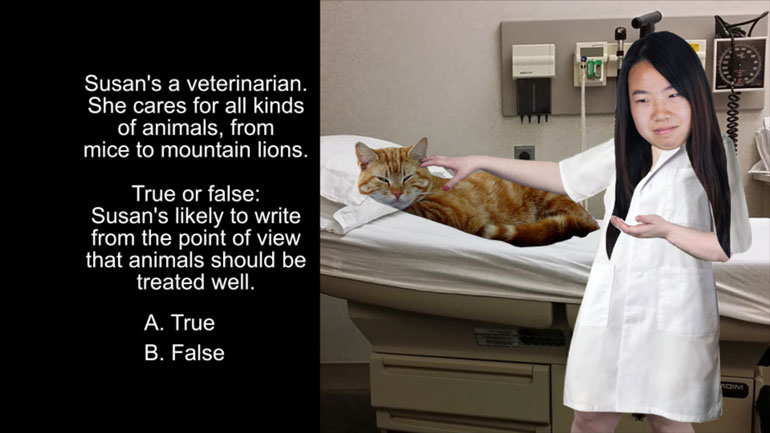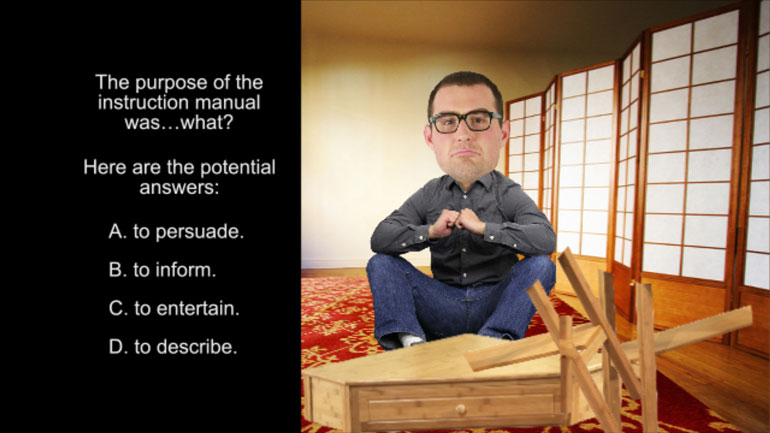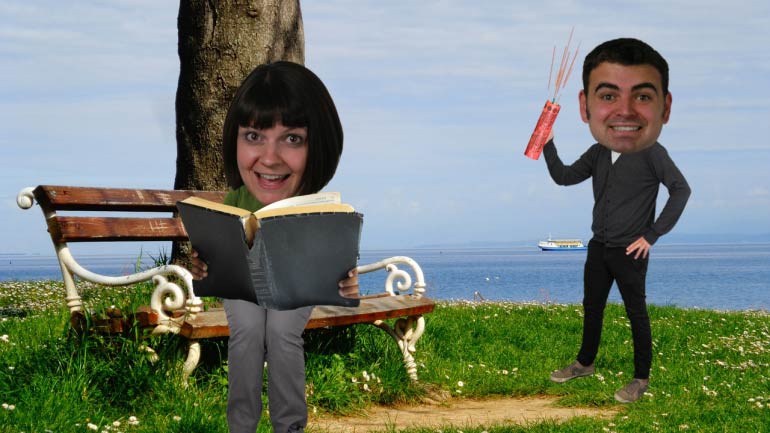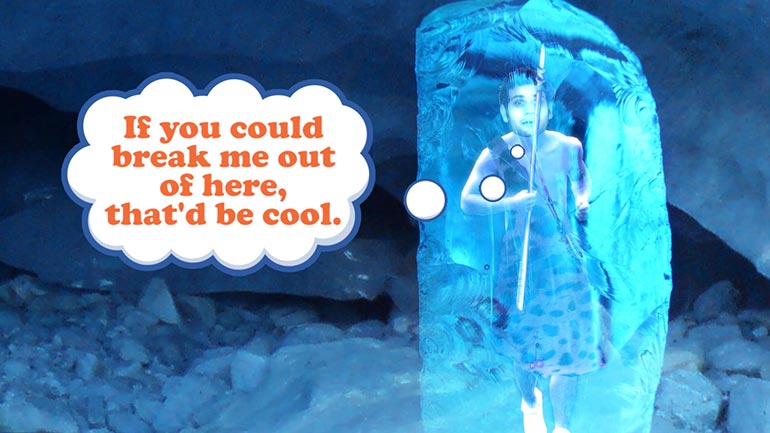ShmoopTube
Where Monty Python meets your 10th grade teacher.
Search Thousands of Shmoop Videos
Science 3: Elements of a Book 31 Views
Share It!
Description:
Forget earth, wind, and fire. Today's all about paper, ink, and um...ideas? We're learning about the elements of a book.
Transcript
- 00:05
[Dino and Coop singing]
- 00:13
Books really do have an infinite number of uses.. [Pile of books]
- 00:16
Door stop…
- 00:17
Fly swatter…
- 00:18
And with some sturdy rope, even stilts! [Someone swats a fly with a book]
Full Transcript
- 00:20
But uh…maybe don't try that last one… [Kids falls over using books as stilts]
- 00:22
And if you do, don't tell anyone we gave you the idea.
- 00:25
Anyway, a book's best use also happens to be its intended use: to contain and share information.
- 00:30
And guess what?
- 00:31
They're pretty good at it!
- 00:32
And when it comes to trying to locate information in a non-fiction book, it couldn't be easier.
- 00:36
After all, many non-fiction books contain certain elements specifically designed to [Someone takes a book from the nonfiction trolley]
- 00:40
help you find the information you need.
- 00:42
For starters, near the beginning of the book, you'll usually find a table of contents.
- 00:46
And hey, Maria von Trapp wasn't lying…the beginning is a very good place to start. [Kids sat round as she plays guitar]
- 00:51
The table of contents outlines the different chapters and tells you which page they start on.
- 00:55
Often, this will give you a good idea as to where you should begin your research. [Dino pointing at a blackboard]
- 00:58
Say you have a book on dinosaurs and you want to look up the Jurassic period.
- 01:02
There will probably be an entry in the table of contents about that era.
- 01:05
If the table of contents doesn't seem to be too much help, or you have a very specific
- 01:09
word you'd like to search for, then your best bet is to flip to the back of the book and [The book is flipped to the end]
- 01:13
look for an index.
- 01:14
An index is an alphabetical list of terms, topics and phrases that appear in the book, [Coop pointing at a blackboard]
- 01:18
as well as the specific pages that you can find them on.
- 01:21
It's useful for when you want to read about pterodactyls, because heck, who wouldn't
- 01:25
want to read about pterodactyls?
- 01:26
They're dinosaurs that fly. [Pterodactyl flying]
- 01:28
And if, on your never-ending quest for knowledge, you come across a word or phrase that leaves
- 01:33
you flat-out confused, never fear! [Kid reading a book looks perplexed]
- 01:35
The glossary is here!
- 01:36
Say you came across the word coprolite.
- 01:38
What could that be? [The word is highlighted]
- 01:39
Well, just flip to the handy dandy glossary, usually found near the back of the book.
- 01:43
This is a list of terms and phrases in the book that the authors expect readers may have [Dino pointing at a blackboard]
- 01:47
some trouble with.
- 01:48
And beside each word or phrase is a definition, explaining exactly what it means. [Coop pointing at a blackboard]
- 01:52
Couldn't get any more useful than that, right?
- 01:54
Oh and by the way, a coprolite is fossilized poop. [Kid reading the book looks happy]
- 01:56
Thanks glossary! [Thumbs up]
- 01:58
So between the table of contents, the index, and the glossary, locating information in
- 02:02
a non-fiction book is easy as pie.
- 02:04
And if you don't know what the phrase “easy as pie” means,
- 02:07
you know where to look: the glossary! [Kid goes back to the glossary]
- 02:09
We like to think that phrase exists because of how easily we can eat an entire pie in one sitting. [Kid looks stuffed after eating the whole pie]
- 02:13
Mmmm, banana cream…
Up Next
ELA Drills, Beginner: Point of View. Is the statement in the video true or false?
Related Videos
ELA Drills, Beginner: Textual Analysis 1. The purpose of the instruction manual was...what?
ELA Drills, Beginner: Point of View 3. Which sentence in the passage best shows the narrator's point of view on the topic of Chelsea Simpson?
We wanted to make a video about sedentary rocks, but we couldn't get lazy uncle Rocky off the couch. Oh well. We'll teach you about sedimentary roc...
Today we're bringing you the opposite of Jurassic Park—how living things become fossils. Okay okay, it might not be quite as fun...but hey, at le...




